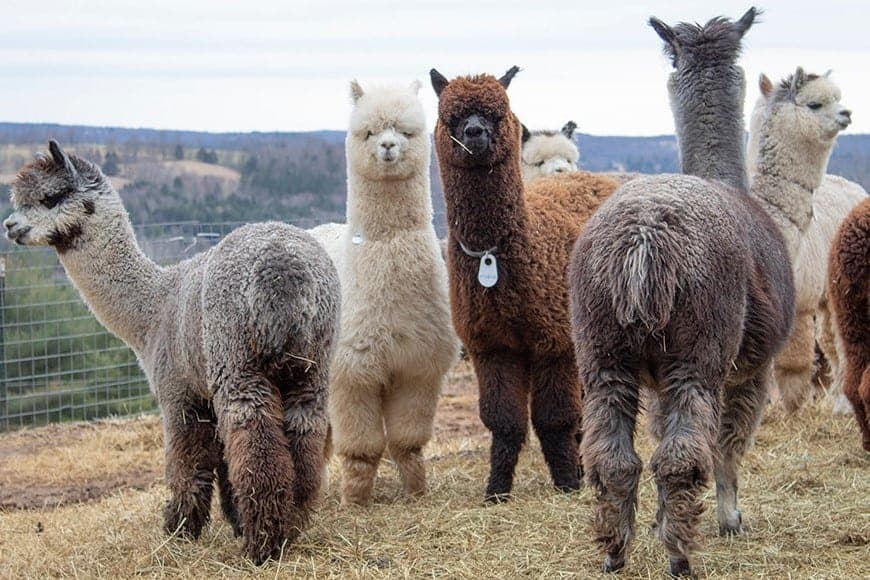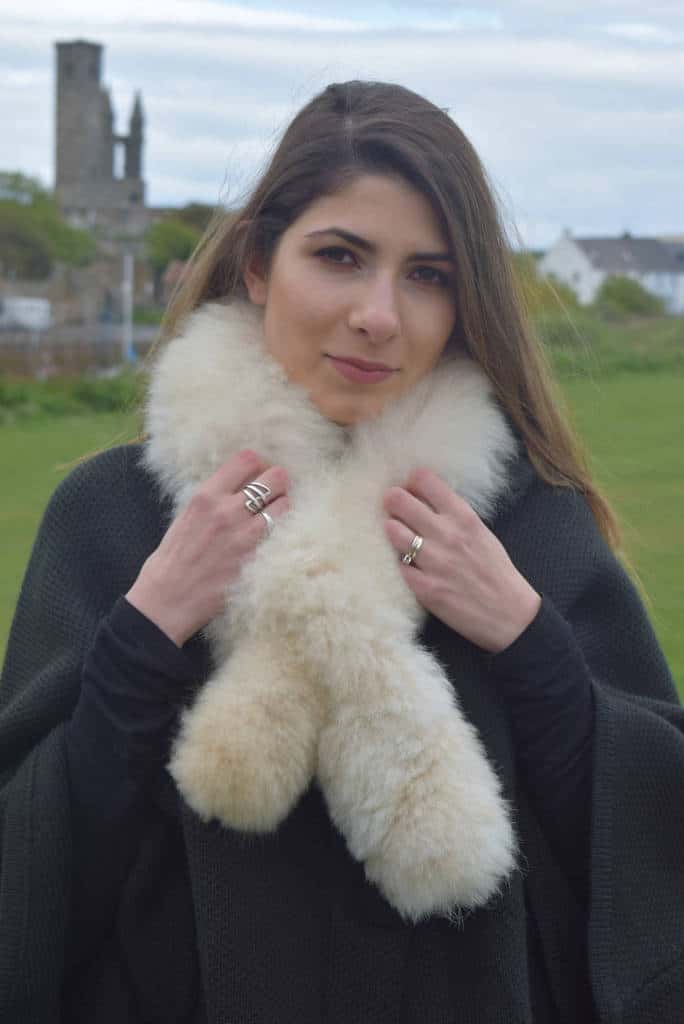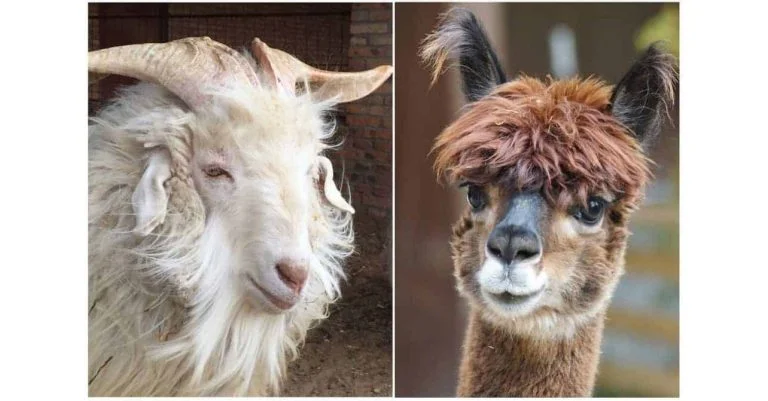Alpacas and Llamas History
The history of the alpaca shows they originate from South America. They are bred from the wild Vicuna which is now a rare and protected species. The llama is bred from the wild Guanaco, which is still relatively common throughout South America. They are both in the camelid family, which also includes the Asian camel. Domesticated for 9000 years, alpacas have played an important role in the survival and economy of the Andean people in South America.
The value of the alpaca and llama was recognised as early as the 14th Century. When the Incas in South America used alpacas and Llamas for food, fuel, clothing, transportation and religious ceremony. Alpacas were considered so important to the survival of the indigenous people. Being tightly controlled by the government and Inca royalty.
Alpacas and llamas thrived at this period with numbers swelling to 50 million animals. The decline of alpacas began in 1532 when the Spanish invaded South America and alpacas were pushed towards the Andes. 98% of the alpaca population were killed by the Spanish invaders. Llamas and alpacas were left to interbreed and changed from a single-coated animal to the two-coated animal of today. Breeding programs of today are aimed at improving the quality of alpaca and llama. By breeding not forward but back to where it was some 500 years ago, prior to the Spanish conquest.
Fleece/Fibre
Alpaca fleece is measured in microns, which is a millionth of a meter. The average human hair is approximately 50-120 microns wide. Llamas usually range from 50-65 microns and alpacas from 16-40. Once a llama has been fleeced, the fleece will often just be thrown away. Where as alpaca fleece can be up to a sixth of a human hair wide so creating its soft, silky feel. The function and purpose of the alpacas is for its fleece – soft, smooth, water repellent and hypoallergenic.
Size, Appearance and Behavior
Alpacas are much smaller (120-180 lbs and 3 ft at the shoulder) and are solely used for their fleece. In addition they are a flight animal and will not stand up for themselves. Llamas are about 300+ lbs, so about twice the weight of an Alpaca. Taller (4-4.5 feet at the shoulder) and are used for mountain packing. Llamas have always been a beast of burden and are used to help protect alpacas and sheep from predators by being livestock guard dogs. One of the easiest ways to tell a llama from an alpaca is the “banana ears” on a llama. There ears arch inwards where as Alpaca ears point straight out. There are approximately 45,000 alpacas registered within the United Kingdom.
Lifespan
Alpacas will live 15 to 20 years, with a few living up to 30 years of age. The reproductive lifespan of a Alpaca herdshire (stud) is from 4 to 16 years of age. Prime years are from 5-10 years old. The average growth rate of the coat is 5 to 10 inches per year. The average yearly weight of the shaved adult alpaca coat ranges from 7 to 10 pounds.
Llamas get a bad rap for spitting on people. Just like every dog has the potential to bite, so does a llama have potential to spit to protect him / herself when feeling threatened. If you respect them, they are great creatures and so they are meant to be confident and bold. That is what they have been brought up to do. If you give them some treats and a few scratches, they will love you like the rest of their herd.
The Suri Alpaca
Suri alpacas are rare and make up only 5% of the worlds alpaca population. Out of 37,000 Alpacas registered in the UK, there are only 2,000 Suris. They are genetically dominant (so if you cross breed a pure Suri with a Huacaya you end up with a Suri). Rather than the Teddy bear style bright, crimpy fleece of the Huacaya (pronounced Wuh-kai-ya), the Suri has a long hanging, dreadlock type lustrous fleece that hangs close to the body and moves freely. It is fine and dense, greasy in feeling and cool to the touch.
Suri Fleece
The Suri fleece is also one of the most desirable fibres in the world. It is heavily used by Italian fashion houses as high fashion fabric for designer clothing. Producing items such as, luxury apparel, coats, sweaters and specialty interior fabrics and textiles.
The Suri Fleece hangs close to the body, moves freely and gives the Alpaca a lustrous and flat-sided appearance. The fleece should start locking at the head, which should run down the neck, across the body and down the legs all the way to the toes. The primary sign of quality in a Suri is lustre but the animal should also have a fine and dense, greasy feeling fleece. Which should be cool to the touch.
4 Lock Styles
There are four acceptable styles of lock in a Suri fleece but the locks should start at the skin, be compact and independent. Spirals in the lock can twist to either left or right and can be with or without a wave and should hang straight and hug the body. When opened up the inside locks should be as well formed as the outside and should have lustre right to the base.
Alpaca fleece is light or heavy in weight, depending on how it is spun. It is a soft, durable, luxurious and silky natural fibre. While similar to sheep’s wool, it is warmer, not prickly, and has no lanolin which makes it hypoallegenic. Alpaca is naturally water-repellent and difficult to ignite.
Huacaya
Huacaya, an alpaca that grows soft spongy fibre, has natural crimp, thus making a naturally elastic yarn well-suited for knitting. Suri has no crimp and thus is a better fit for woven goods. The designer Armani has used Suri alpaca to fashion men’s and women’s suits.
Alpaca fleece is made into various products, from very simple and inexpensive garments. All made by the indigenous communities to sophisticated, industrially made and expensive products such as suits
14 Alpaca and Llama Facts
- Alpaca have soft padded feet. This leaves pasture undamaged, and usable for years.
- They have no top front teeth, so they are gentle grazers.
- The alpaca does not usually eat or destroy trees.
- The average alpaca only eats 4lbs of food a day. Llamas a little more.
- Alpacas do not require abundant amounts of water.
- The herd tends to deposit their manure in one or two spots in the pasture.
- Alpaca and llama manure it a fantastic fertiliser.
- One good acre of pasture can support up to five alpacas or 3 llamas.
- Alpaca’s require minimal fencing, as they do not challenge it.
- Alpacas can produce up to ten lbs of fleece a year.
- Alpacas and Llamas come in 22 different shades of colour starting with white and ending with black with every other natural shade in between.
- Average pregnancy lasts 11.5 months
- The average fleece is worth £300-£400
- Alpacas and llamas respond to their name being called
Links to related material
- 6 Differences Between Llamas and Alpacas, SEP 25, 2015, Andrew Amelinck
2. Difference Between Llama and Alpaca?
3. 10 Differences Between Llamas And Alpacas – Llamas vs Alpacas, Posted on 2 sted in alpaca vs llamas, alpacas, difference between alpacas and llamas, llama vs alpaca 4 March 2017








5 thoughts on “Alpacas and Llamas History”
leke kremi markası on Cashmere vs Alpaca – which is the most luxurious and are either sustainable?
Gary Gilbert on Cashmere vs Alpaca – which is the most luxurious and are either sustainable?
Takipçi Satın AL on Cashmere vs Alpaca – which is the most luxurious and are either sustainable?
RUPERT on Cashmere vs Alpaca – which is the most luxurious and are either sustainable?
absedk on Cashmere vs Alpaca – which is the most luxurious and are either sustainable?